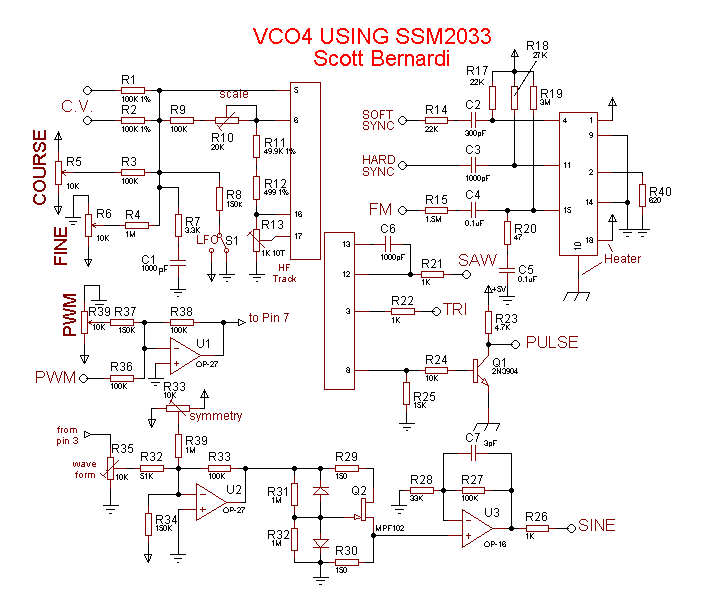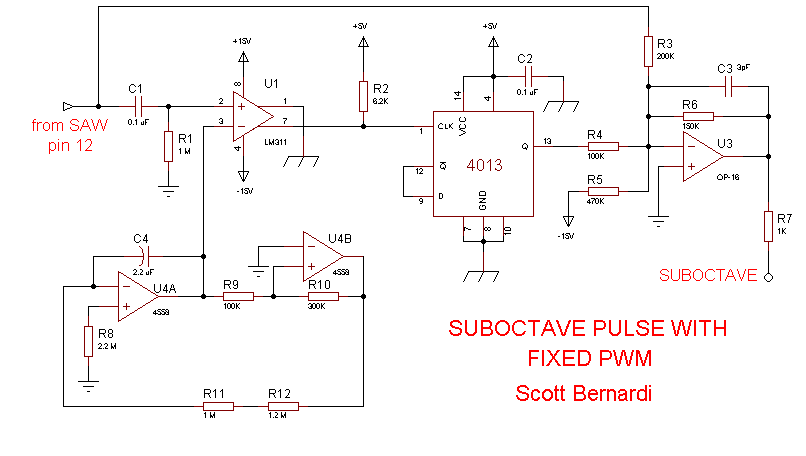

Use high slew rate opamps, such as JFET types or LM318 for opamps in the signal path. I used OP-16's, which are LF356 types, because they were readily available to me. The U4 dual opamp in the suboctave circuit are not critical. I used a 4558, but a TL072 or 747 could be used.
V/octave scale adjustment: Set coarse and fine frequency pots to give 100hz output with 0v C.V. Make sure LFO switch is off. Apply 2 volts to a control voltage input. Adjust R10 until the frequency is 400hz (two octaves).
Hi frequency tracking adjustment: Set coarse and fine frequency pots to give 1000hz output with 0v C.V. Make sure LFO switch is off. Apply 4 volts to a control voltage input. Adjust R13 until the frequency is 16000hz (four octaves).
Sine shaper adjustment: This is easiest to do if you have access to an
oscilloscope. Adjust R33 until the waveform at the output of U3 is
symmetrical about zero, then adjust R35 for a nice rounded sine. There may
be some interaction between the two adjustment trims.
Without a scope, you'll just need to listen to the sine output and
adjust for the "smoothest" tone. Use a frequency of a couple hundred hz.